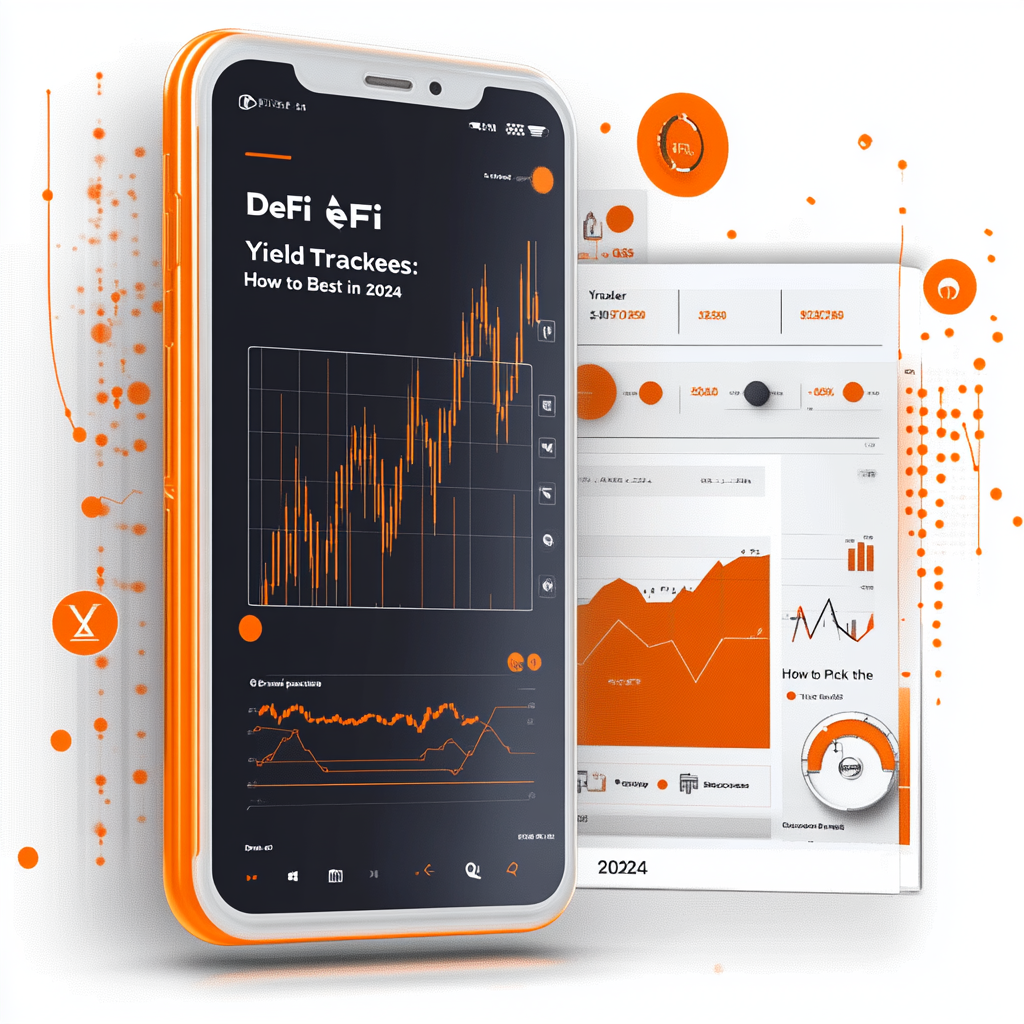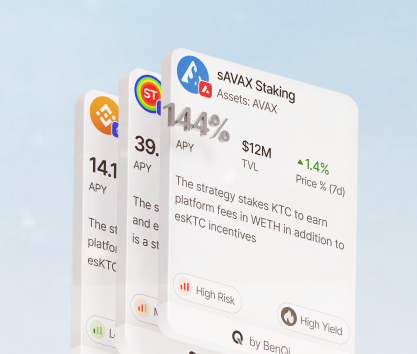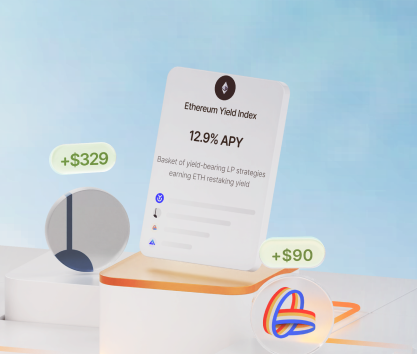Throughout centuries, taking care of finances was a difficult task. However, it turned into a nightmare by 2024. A typical retail trader will work with at least 3 CEX platforms and over 50 different assets during his first several years of investing in the crypto market. Contemporary investors operating in the DeFi ecosystem usually have several positions on multiple protocols making it hard to track everything efficiently.
Where demand exists, an offer immediately pops up. In the blockchain industry, dozens of companies and development teams are working hard to deliver products that can significantly simplify the life of an investor. With the rich selection of available options, many newcomers struggle to find the best tool for the job.
Imagine a situation where you invest ETH on LIDO, receive stETH, use it as collateral on Aave to take out a USDC loan, stake it on something like Fluid, and try to track all three positions at the same! It is already a massive undertaking despite being a single yet very complicated market position. Some creative investors are engaging with several protocols simultaneously to amplify their gains.
The popularity of liquid staking platforms is one of the biggest reasons why portfolios became so complicated across the board. The ability to move assets around freely without them being fully locked is awesome for end users, but it brings additional complexity to the table. Keeping track of all these positions is quite hard.
Instruments for yield tracking are diverse, but they all have many things in common, namely:
- On-chain data collection. Many platforms simply use your wallet addresses to immediately fetch the data directly from blockchains. Since applications like MetaMask allow for a quick and convenient connection between different agents in the decentralized ecosystem, users enjoy the convenience of simply using their wallets and allowing trackers to systemize everything.
- Detailed dashboards. The data is neatly presented in the form of graphs, charts, and tables. Again, users don’t have to do anything, these tools form reports and track data automatically to ensure that you always have the big picture right in front of you. While some Dapps struggle to deliver a wholesome user experience and have clunky interfaces, they are still miles better than manually analyzing on-chain data.
- Additional services. In many cases, portfolio tracking is just a small part of the overall service. Auto-compounding protocols, yield aggregators, automation vendors, and many other platforms offer whole suites of mini-apps that can gather on-chain data and turn it into something comprehensive. Specialized tools and platforms designed to work in the yield farming sector are, obviously, much better suited to track portfolios full of DeFi stakes.
Many of these popular tools are completely free to use and offer a massive set of data that can be used for in-depth analysis. For example, one of the best DeFi trackers out there is DeFiLlama, it has a special tool called Llamafolio. It is an open-source instrument that can easily manage swaths of data from 434 protocols on 17 different blockchains. If you are interested in using DeFi investment opportunities, you should check out this Dapp.
DeFi portfolio management
The benefits of appropriate market position tracking become apparent when you start diversifying investments and focusing on various instruments available across the whole ecosystem. If you staked 10 ETH and do not plan to do anything with it for a long time, making sure that you understand your position in the market is not that hard. 10 ETH will most likely remain 10 ETH.
The situation dramatically changes when you add other investment instruments to the equation. Modern capital holders can participate in various forms of yield farming including the following:
- Direct staking in layer 1 and layer 2 blockchains. Ethereum and Cardano are some of the most obvious examples where main nets allow users to become validators and reward them for their contribution to the network’s operation. You can even stake Bitcoin using solutions from Stacks allowing wrapping and staking of the biggest crypto coin in the world.
- Liquid staking is also a popular tool. Some platforms like MakerDAO and LIDO offer their users an opportunity to keep assets locked in so they can continue producing profits while giving them staked versions of tokens in exchange. MakerDAO has a module called DAI Savings Rate. By transferring stablecoins to the module, you automatically receive sDAI that can be used as collateral on platforms like Ajna.
- Lending protocols. The decentralized finance ecosystem is full of solutions designed to support a high level of asset flow. Projects like Compound and Aave use smart contracts to create a seamless and mostly automatic lending and borrowing framework. Users interact in a trustless and permissionless environment. Yields here are typically low but offer much higher levels of safety since all loans are collateralized.
- Cross-chain bridges. These projects are created to facilitate interoperability in the DeFi ecosystem allowing blockchains with different technological foundations to exchange data through intermediaries called oracles. Cross-chains also have liquidity pools that are usually two-sided representing exchange routes. For example, Gnosis has a pool for sDAI allowing MakerDAO stablecoins to be transferred to different blockchains.
These are some of the most relevant platforms where tracking returns is necessary for investors. However, the list of potential inclusions in a DeFi portfolio is quite long and includes categories like CDP (fractional real-estate ownership), RWA (real-world assets acquisition), derivatives, uncollateralized lending, liquid staking, and more. A creative investor can create a monstrosity of a portfolio filled with dozens of complicated market positions.
DeFi yield optimization
It is important to stay calm and collected while searching for the best ways to park your capital. In many cases, chasing the biggest APY and focusing on high-risk memecoins can be detrimental. Optimizing profitability is all about achieving a point where you can confidently estimate potential returns and have some of the most dangerous risks covered by hedging positions or through diversification.
Let’s discuss several strategies that help investors optimize their profitability goals:
- Use automated DeFI yield aggregators. These tools help you quickly analyze the composition of the portfolio and identify the best ways to adjust market positions depending on their performances. Aggregators automatically search for the best investment opportunities and reinvest rewards when necessary. Projects like Yearn Finance or Rivo help you diversify stakes and search for the right combination of pools. APYs on Rivo range from 0.06% on lending pools to over 103% on WELL-ETH. You may also invest in indices instead of separate assets.
- Consider joining DPoS networks. Delegated proof-of-stake is an approach where individual investors bundle together and allow validators to use their funds as stakes. Returns on Ethereum 2.0 staking can reach 7% annually which is much better than a high-yield bank account where you can expect about 5% APY. Validators usually take a small cut as a reward for their service. These options are great because an investor who cannot afford the full stake (32 ETH which is roughly $80,000 in 2024) can still utilize direct staking as a diversification option for their portfolio.
- Avoid high-risk investments. The DeFi industry is still maturing and attracts a lot of bad actors. Solana and Base are especially notorious for the amount of rug pulls and questionable projects including memecoins and algo-stables. The latter can work theoretically but, more often than not, they fail spectacularly. A good example of a questionable high-risk investment is the POPCAT-SOL pair on Kamino Liquidity with its 151,688% APY. The returns are incredibly generous, but the price of POPCAT is hugely volatile and can collapse at any moment.
Finding the right balance between risks and potential profits is essential for any investor who wants to succeed in the long run.
Searching for the best DeFi yield tracker
Contemporary investors have access to a wide range of different tools that can be incredibly useful for a portfolio with multiple market positions requiring regular adjustments. Since each tracker has its own set of advantages and disadvantages, you should pick a platform depending on your preferences and needs. For example, if you don’t have a lot of experience and want to invest safely while having a good overview of finances, Rivo with its long list of indices is a good start.
We want to present you a list of useful Dapps that provide portfolio tracking capabilities alongside other great features:
- Rivo.xyz is a great application that focuses on custom investment strategies designed and back-tested by experts. The flagship product is the smart wallet that can work with a wide range of smart contracts and offers immediate access to the DeFi marketplace where you can make investments in one click. The catalog of investment options includes indices which can be a good choice for a beginner. For instance, the Arbitrum Yield Index has an 11% APY and the DeFi Core Index is updated weekly with APY fluctuating between 10% and 35% depending on market conditions.
- APY.Vision is a good destination for people who want to track their investments in the DeFi sector. The app is designed quite well and offers a good user experience comparable to that of the best Web 2.0 offerings. As of August 2024, the application is undergoing a massive overhaul to deliver an even better set of features. The app supports a variety of chains and protocols including Ethereum, Arbitrum, Solana, Uniswap, Balancer, and many others.
- De.Fi is a premiere data aggregator that tracks a large number of protocols and chains. The Yield Explorer allows users to quickly invest in tracked pools after comparing them to each other using a neatly organized table. If you are interested in direct staking and early fundraising by promising startups, the DeFi Accelerator is an excellent platform to participate in ICOs, early access financing, and more. You can connect to the Dapp using several blockchains and corresponding wallets. Use an EVM-compatible one for Ethereum or wallets from the Cosmos ecosystem. You can also connect CEX accounts via API.
These tools are excellent for DeFi yield farming accounting and yield tracking. Investors using apps like Rivo can see their holdings in real time and make adjustments as they see fit. Many of these Dapps also feature one-click investment products.









